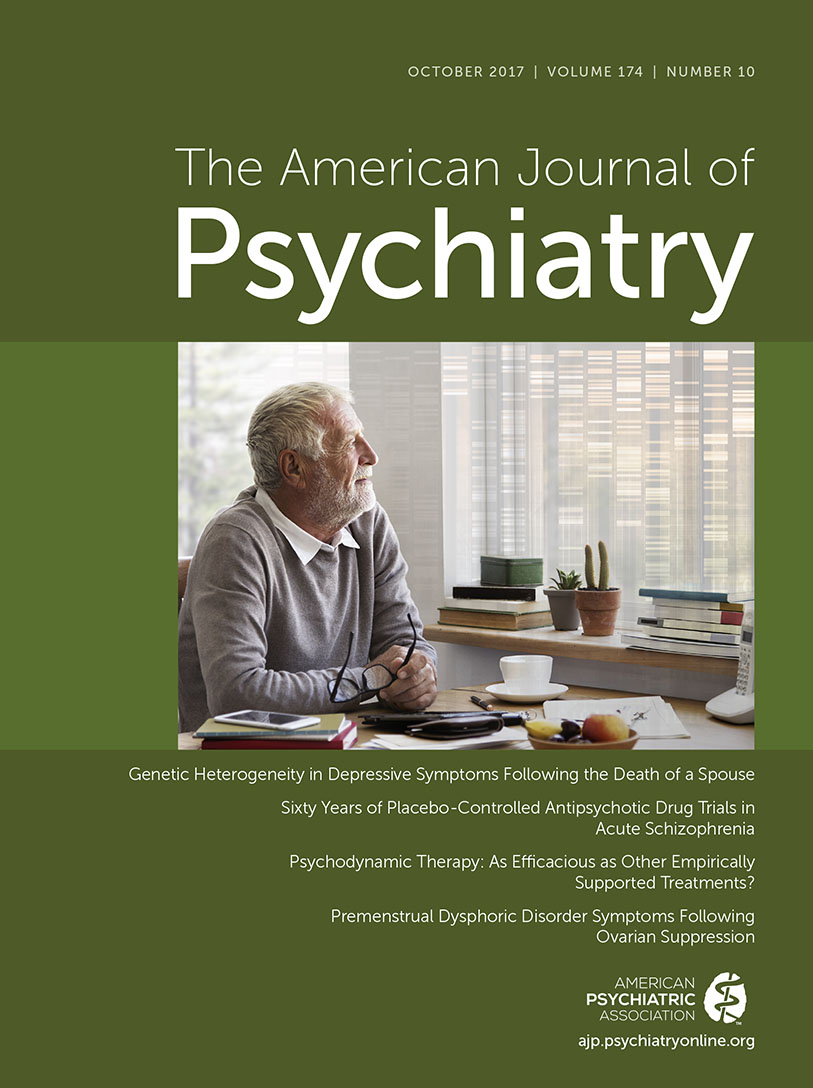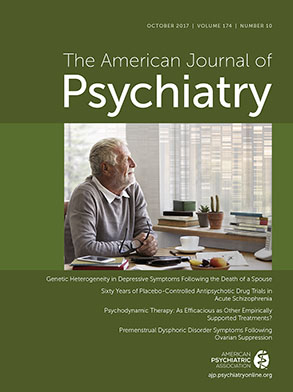The current opioid crisis has reminded clinicians—and indeed, everyone—of the devastating effects of drug use and drug use disorders. It has also reminded us that, despite our increased understanding of the neurobiology and social determinants of drug use disorders, their prevention and treatment continue to be a major public health problem. By advancing our comprehension of the role of motivation in the course of drug disorders, the study reported by Kendler et al. in this issue (
1) provides guidance and inspiration on how to move forward toward developing more effective interventions for drug use disorders.
Kendler et al. combined data from Swedish medical, pharmacy, and criminal registries to study the effect of pregnancy on drug abuse in a representative, population-based cohort of women born between 1980 and 1990 who gave birth between ages 20 and 35 (N=149,521). Although several reports, cited in the article, had already documented an association between pregnancy and decreased risk of drug use, this study includes several interesting and innovative features. First, its sample size makes it an almost definitive study. Second, the investigators used a variety of analytic strategies to allow for the estimation of the intraindividual effects, to adjust for familial effects, and to obtain estimates of the effects of pregnancy on the spouse’s drug use. They also conducted a series of sensitivity analyses to make sure that the results were robust and not due to a particular definition of the variables or way of conducting the analyses. Finally, the authors went beyond the confines of traditional epidemiology to suggest implications for treatment of drug abuse.
The study had three main findings. The first was that, after taking into account potential confounders (i.e., variables that could distort the apparent relationship between pregnancy status and drug abuse), rates of drug abuse were reduced by 60%−83%. The higher estimates are in this case the most reliable because they are based on intraindividual analyses. By using each woman as her own control, intraindividual analyses are generally able to eliminate more confounders than other types of analyses, such as those comparing pregnant to nonpregnant women of the same age. Furthermore, the effect of the first and second pregnancy on reduction in risk of drug use disorders was the same, suggesting a robust relationship between pregnancy and reduced drug use.
The second finding was that the reduction in the risk of drug abuse during pregnancy became even more marked during the immediate postpartum period. While this protective effect gradually waned over time, reductions during early parenting were substantial. Approximately 2 years after birth, rates of drug abuse were similar to those observed during pregnancy (i.e., much lower than prior to pregnancy), although at some point the protective effect of the first pregnancy and postpartum period disappeared, as indicated by similar reductions in drug use during a second pregnancy.
The third finding was that pregnancy also decreased the risk of drug use in the spouses, although the magnitude of the effect was smaller than in the mothers. Furthermore, if the spouse had a drug use disorder, the protective effect of pregnancy on drug use disorders in the mothers was smaller. This finding may not appear surprising at first, but it becomes more impressive when we consider that other variables that could have been expected to modify the effect of pregnancy on drug use in the mother did not. These included history of drug abuse in the mother’s parents; a prior criminal history or prior psychiatric diagnosis, including a history of a drug use disorder in the mother; and age at pregnancy. One variable that was not reported that would also be of interest is whether the present findings are affected by the severity of the mother’s substance abuse problem. For more severe cases, motivational processes may be more compromised and psychiatric comorbidities more prevalent.
The findings of the study elegantly illustrate the quintessentially biopsychosocial nature of drug use disorders. In addition to being brain disorders (
2), drug use disorders are disorders of motivation and choice (
3,
4), as exemplified by changes in their course during pregnancy and the postpartum period. They are also strongly influenced by the social environment, as exemplified in this study by the dynamic interaction among spousal drug use, pregnancy, and risk of maternal drug abuse. The complexity of the nature and etiology of drug use disorders offers opportunities for interventions at multiple, complementary levels.
An important innovation of the Kendler et al. study was the inclusion in their research team of a clinical investigator. This allowed them to go beyond purely descriptive epidemiology and suggest specific clinical interventions derived from their findings—in this case, contingency management. There is a need for continued dialogue between clinicians and epidemiologists (
5). Clinicians, with their patient contact, are in a privileged position to generate uniquely important questions that epidemiologists can address with their large and diverse data sets. Ongoing dialogues between epidemiologists, intervention developers, and health systems administrators could also help prioritize specific populations or disorders for intervention development, facilitate the incorporation (“translation”) of epidemiological findings into intervention development, and test, at the population level, hypothesized mechanisms of action of treatment or preventive interventions.
From a methodological perspective, the multiple analytical approaches used by Kendler et al. offer a prime example of how epidemiological methods can uniquely address questions that are simply not amenable to other existing methods. For example, patients are highly diverse in age, comorbidity, culture, preferences, and treatment history, just to name a few variable factors. Thus, while randomized clinical trials are usually considered the gold standard for clinical inference, their results often have limited generalizability (
6,
7), leaving clinicians to decide to what extent the results apply to their patients. Epidemiological studies, when properly designed, can excel in incorporating patient diversity and extended follow-up times. Maybe an alternative, more realistic methodological stance would be to agree that in psychiatry, similar to the physical sciences or astronomy, some questions are better answered with experimental methods, whereas others are better addressed by careful, theoretically informed observation of large systems. In some cases, it may be possible to combine experimental and population-based data (
8) to better inform both clinical and population perspectives. As computational psychiatry (
9,
10) becomes increasingly mainstream, it may allow for an even better integration of experimental, clinical, and population-level data, including the use of simulations. As clinicians we would benefit from having a larger tool kit from which to draw knowledge applicable to our often complex patients.

